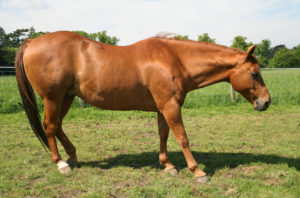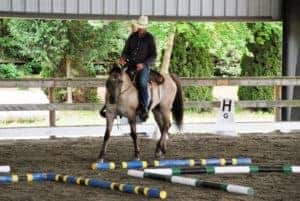
Laminitis Survivors: Getting Back on Grass
After a horse has had a bout of laminitis, can she be brought up slowly on grass again? If so, how soon can this be done?

After a horse has had a bout of laminitis, can she be brought up slowly on grass again? If so, how soon can this be done?

Laminitis is one of the most common diseases in horses, and it has many different causes. Find answers to listener questions on endocrine-related laminitis in horses with conditions such as PPID, equine metabolic syndrome, and insulin resistance. Sponsored by InsulinWise.

An acute laminitic episode is an emergency. Drs. Jane Manfredi and Teresa Burns discuss critical care of these cases.

How does a trainer explain a retired racehorse’s previous injury to a potential buyer? Two veterinarians and a three-day eventer weigh in.

Researchers determined that Devil’s claw extract did not cause any clinically detectable adverse effects in horses following oral administration.

In this two-part presentation from the University of Kentucky, learn about “Research Into Managing Horses and Cattle on Fescue Pastures” from Dr. Jamie Mathews and “Grazing Mares on Novel Endophyte Fescue” from Dr. Karen McDowell.

From initial diagnosis to hoof care and bisphosphonate use, find out the newest information about this debilitating condition.

Researchers found that very ill horses with high glucose and insulin levels were more likely to survive, while those with high glucose but low insulin were more likely to die.

Did you know your horse could be suffering from equine Cushing’s disease long before his coat turns long and curly? Learn how to recognize subtle signs and offer your horse an early intervention for PPID.

Be familiar with the most common problems that can happen within 24 hours of foaling.

Colic is the No. 1 killer of horses. Learn how to spot the signs and give your horse the greatest chance at survival.

Do horses with PPID, EMS, and/or IR have a greater laminitis risk after receiving joint injections? Drs. Vern Dryden and Amanda Adams respond.

Learn about diagnosis and management of navicular horses.

Do you have a plan in place for your horses if wildfires, tornadoes, floods, or hurricanes strike in your area? Learn how to prepare for the worst-case natural disaster scenarios during our live event.

Seventeen horses have died or been euthanized after racing- and training-related incidents at the track this year.

Learning theory describes how we can influence horse behavior and improve training outcomes. Discover how to shape your horse’s behavior.
Stay on top of the most recent Horse Health news with
© 2022 Copyright Statement dolor sit amet, consetetur sadipscing User Terms, sed diam nonumy eirmod tempor invidunt ut labore et dolore magna aliquyam erat, sed diam voluptua. At vero eos et accusam et justo duo dolores et ea rebum. Stet clita kasd gubergren, no sea takimata sanctus est Lorem ipsum dolor sit amet.